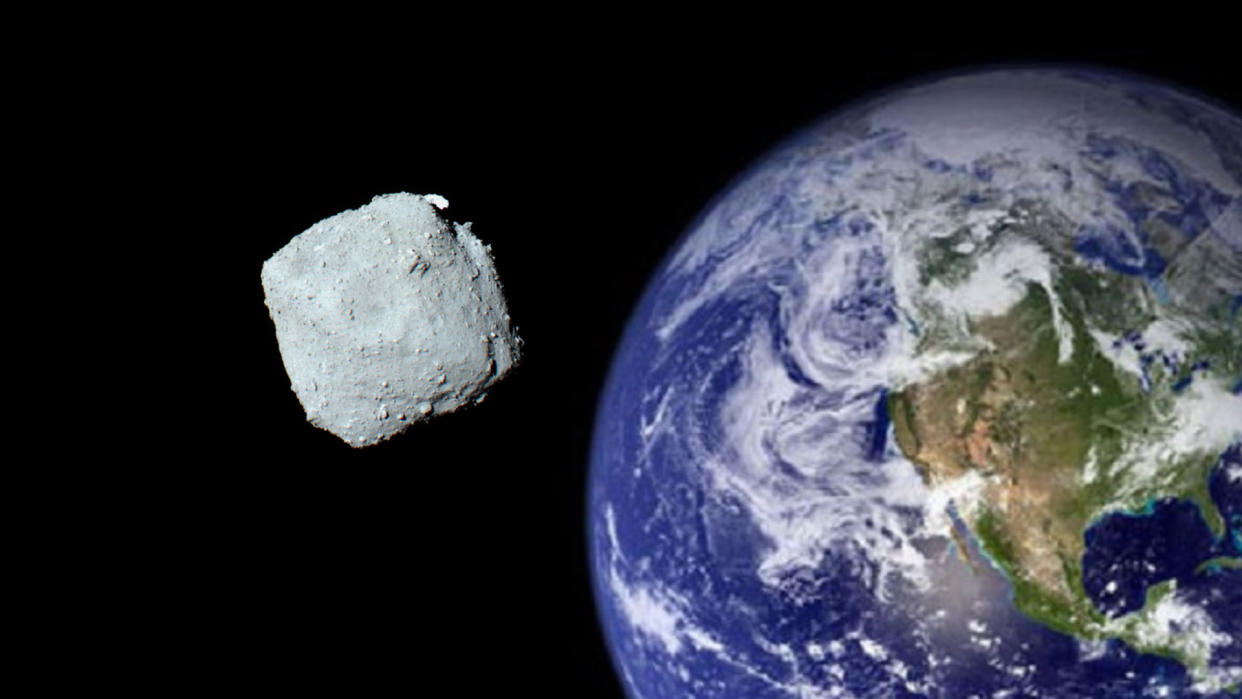Newly discovered asteroid zooms within 2,500 miles of Earth

A newly discovered space rock about 6.5 feet wide (2 meters) zipped past Earth today at a distance five times closer than GPS satellites orbit.
The small asteroid, designated C9FMVU2, was first spotted on Thursday morning (Sept. 7), only a few hours before it made its closest approach to Earth. At 10:25 a.m EDT (1425 GMT), the space rock passed the planet at a distance of only 2,500 miles (4,000 kilometers) — about 1% of the Earth-moon distance. For comparison, satellites of the U.S. navigational and positioning constellation GPS orbit at an altitude of 12,550 miles (20,200 km).
Because the asteroid is so small it never posed any danger to Earth, the European Space Agency (ESA) said in a post Thursday on X, formerly known as Twitter. Had the asteroid collided with the planet, it would have burned up in Earth's atmosphere, causing a spectacular fireball. A few small fragments would likely have made it to the planet's surface.
Related: Asteroid apocalypse: How big must a space rock be to end human civilization?
According to Richard Moissl, ESA's head of planetary defense, the close pass will significantly alter the asteroid's trajectory due to Earth's gravitational pull.
C9FMVU2 was too small to be visible to amateur astronomers, according to ESA.
Astronomers have to date discovered over 30,000 near-Earth asteroids, space rocks that zoom through space in close proximity to Earth's orbit. Out of these, only about 2,300 are considered potentially hazardous, according to NASA.
An asteroid must be wider than 460 feet (140 meters) and follow an orbit that takes it within 20 lunar distances of Earth to receive the official "potentially hazardous" label. Even much smaller asteroids, however, would cause widespread destruction if they were to hit the planet. For example, the shock wave caused by the impact of the only 65-foot-wide (20 m) Chelyabinsk asteroid, which exploded in the sky above southern Russia in 2013, shattered thousands of windows, injuring about 1,400 people with shards of flying glass.
Related stories:
— Protecting Earth from asteroids is complicated and requires global cooperation
— How big is the asteroid threat, really?
— Asteroid impacts shifted the moon's poles over billions of years
Astronomers are therefore working hard to map out the population of space rocks near our planet to make sure humankind isn't caught off guard by an unexpected collision. In case a potentially hazardous rock were on a collision course with Earth, the world's space agencies would attempt to divert the approaching asteroid with a mission similar to NASA's Double Asteroid Redirection Test (DART) spacecraft, which successfully altered the orbit of the small asteroid moonlet Dimorphos last year.

